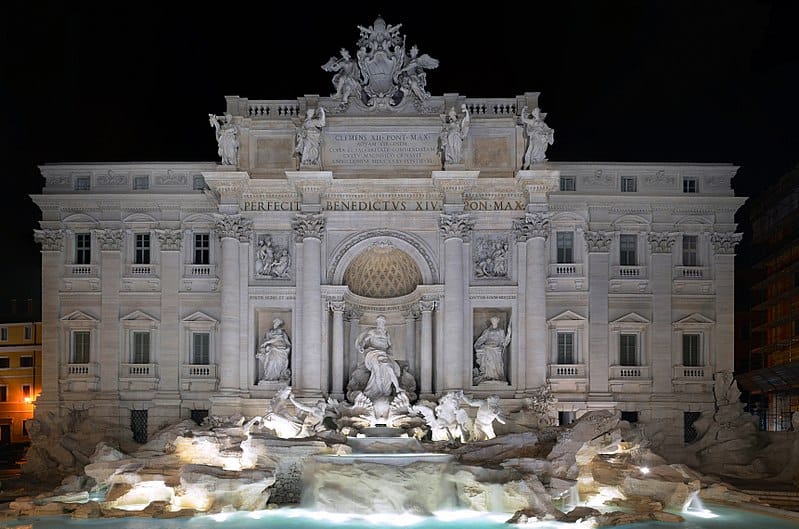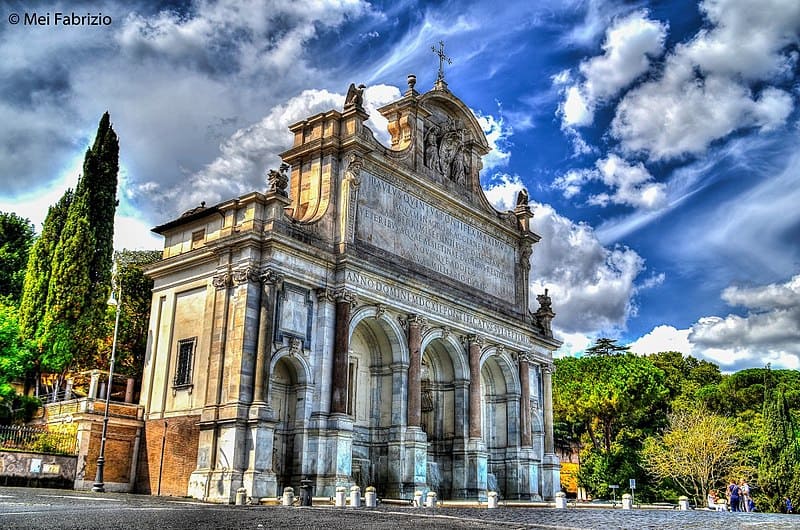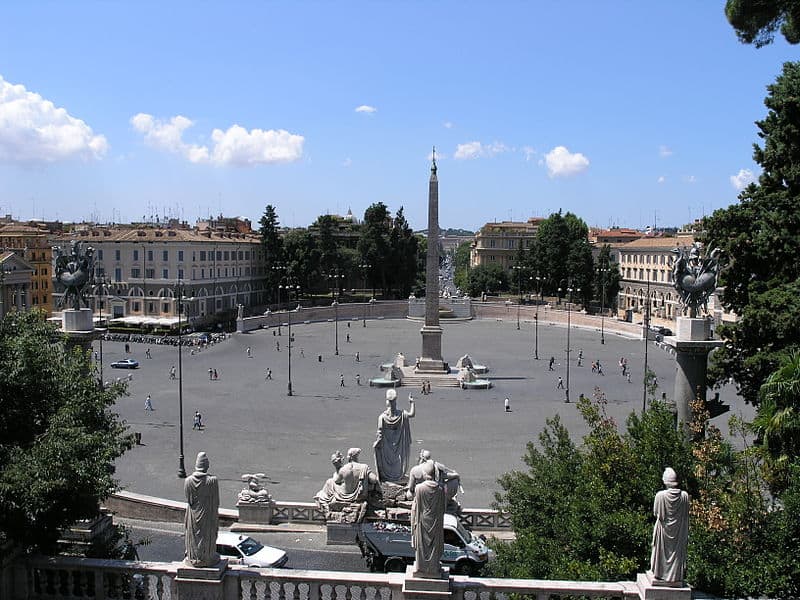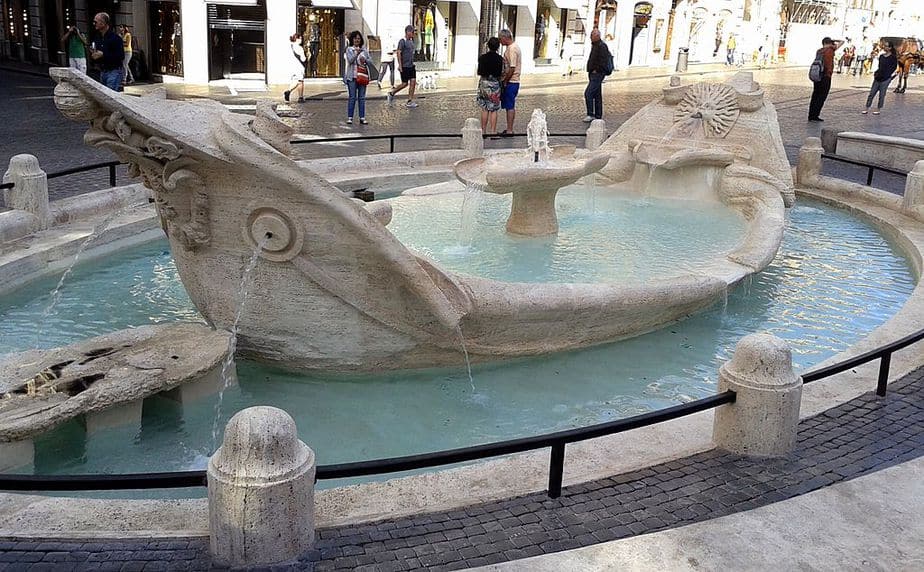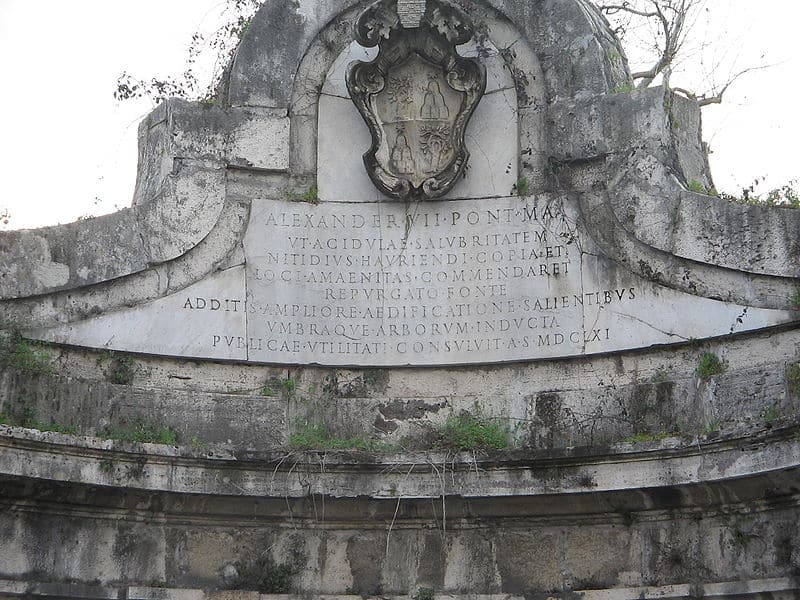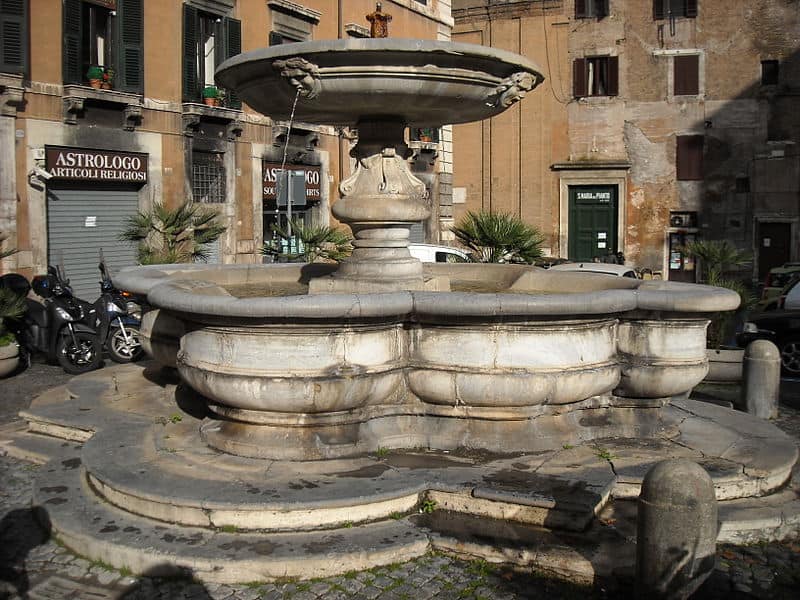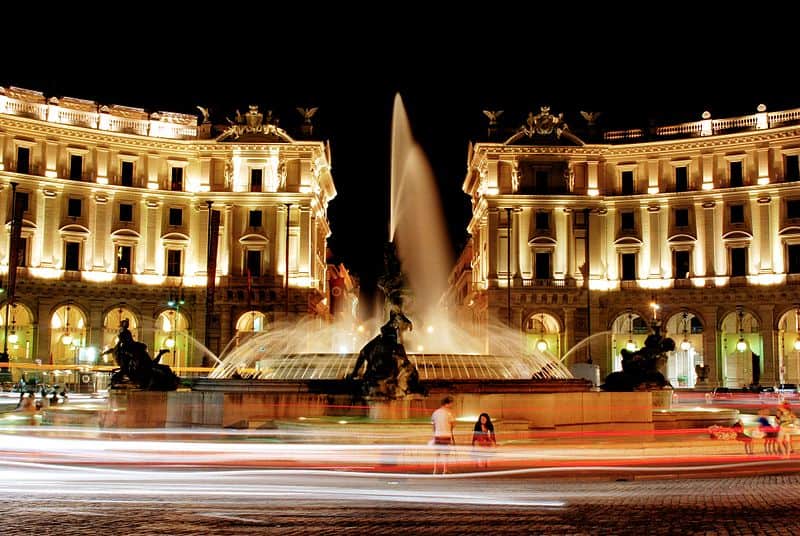The most beautiful fountains in Rome
As you well know, ancient Romans developed the aqueducts.
Thanks to their engineering talent, they brought water to the “eternal city“.
From distant sources, they supplied public fountains, private homes, latrines and Roman baths.
During a walk around the city, you will find the remains of these sophisticated buildings. Today, some of them are still working and still supply the city with water. Amazing isn’t it?
Over time, many architects and artists decorated the city with public fountains.
In fact, under the “dominion” of the Popes, the city was “renewed” with many fountains. The fountains were used improperly by all the Romans since there was no public water in many houses.
During the time, the Popes took good care of the Roman water features. They had them restored, cleaned and they even protected them with the enactment of laws.
We remember the edict “For the conservation and cleaning of the fountains“.
People could not use the fountains to wash their clothes. But also they could not clean buckets and tools, dogs and cats and other animals in the fountains
Today Rome has about 100 public fountains distributed in the Roman districts called “Rioni”.
Let’s find out together the story of the most beautiful fountains in Rome.
The Fountain of the Four Rivers in Piazza Navona
In front of the Church of S. Maria in Agone, you will find the famous fountain also known as the “Fountain of the Rivers”.
The beautiful fountain designed by Gian Lorenzo Bernini between 1648 and 1651.
The fountain stands where once there was a simple drinker for horses. The expenses for its realization were very high and that the Pope had taxed the bread.
Pope Innocent X wanted to affirm his constituted political and religious power.
The main symbol of the fountain is the obelisk. An imitation of the one found on the Appia street and taken by the Romans from Egypt. Bernini added the dove, emblem of Pope Innocent X.
But Bernini also added four colossal figures. They represent the four rivers of the great continents:
- the Ganges;
- the Nile;
- the Danube;
- the Rio Della Plata.
Here you will also find the Fountain of Neptune. Also known among the Romans as “Fontana dei Calderai” because it was located near a small street where there were many shops.
The tank dates back to 1575 while the sculptures were added later in around 1878.
From the Termini Station catch the n. 70 bus to Clodio. Get off at the Rinascimento stop and after a 5 minutes walk, you will find the fountain!
The Trevi Fountain in Rome
What you will admire here is probably the most famous fountain in the world.
Its history dates back to 19 BC and is linked to the Virgo aqueduct.
This aqueduct originated near the Aniene and ran underground for about 20 km, carrying around 1,202 litres of water per second.
The fountain as we see it today stands on the facade of Palazzo Poli. Nicola Salvi built it on the order of Pope Clement XIII in 1731. The Popes had to give wealth to their population. What better way than a fountain?
The fountain over time underwent many structural changes. They used travertine, marble, plaster, stucco and metals.
We can say that the main theme of the fountain is the sea. You can see a rocky cliff that occupies the entire lower part of the building. In the centre, you will find a large niche surrounded by columns and with a statue of Ocean by Pietro Bracci.
The fountain is located in Piazza Trevi.
Take Metro A direction Battistini and get off at the Spagna stop.
The fountain in Piazza Colonna
A few steps from the Column of Marcus Aurelius we find the Fountain of Piazza Colonna.
With the restoration of the Virgo aqueduct, Pope Gregory XIII in 1575 had many fountains built throughout Rome.
The fountain you see in the photo was designed by Giacomo Della Porta and is composed of a basin with concave and convex features, small bands with lions that decorate it outside.
In 1702 Pope Clement XI had the fountain adorned with his coat of arms and added marble sculptures representing open shells and dolphins.
To get to Piazza Colonna, take bus n. 85 from Termini Station. Move towards Arco di Travertino and get off at the S.Claudio stop.
The fountain of the Acqua Paola – Gianicolo
At the point where Via Garibaldi reaches the Janiculum, you can admire the “fontanone dell’Acqua Paola”.
This beautiful fountain was restored by Pope Paul V between about 1608 – 1609 as the surrounding area was not supplied with water.
The monument is characterized by the presence of a basin and by backward arches separated by columns.
Inside the arches, there are large windows that in the past allowed to see the botanical garden that was behind it.
From Termini Station take the 75 towards Poerio / Marino and get off at the Calandrelli stop. After a short 7 minute walk, you will find the fountain.
The fountain of the goddess Roma in Piazza del Popolo
If you find yourself walking near the Piazza del Popolo, below the Pincio you can admire the fountain dedicated to the goddess Roma.
This fountain is characterized by the presence of a marble sculptural group that sees the goddess Roma armed in the company of two statues representing the Tiber and the Aniene.
At her feet you will find the she-wolf suckling Romulus and Remus, depicting the Roman legend.
From Termini Station take the Metro A direction Battistini and get off at the Flaminio stop.
The Barcaccia fountain
At the bottom of the Trinità dei Monti staircase, you will find the famous Barcaccia fountain.
The fountain was designed by Bernini between 1626 and 1629. The tank has the shape of a boat that collects the water that comes out of two suns.
The boat seems to sink but below it, there is a tank that collects excess water.
To reach the Fontana della Barcaccia take the Metro A direction Battistini and get off at the Spagna stop.
The fountain of Acqua Acetosa
This fountain is located in the Parioli district.
Access to the fountain is via a staircase that descends as the Tiber winds its way to the north at this point.
In the niche, you will find the coats of arms of the Chigi family or six mountains with an eight-pointed star.
In 1613 the water was analyzed and Pope Paul V considered it excellent for treating kidneys, spleen, liver and stomach.
The fountain is located in Via Enrico Elia. From Termini Station take the 223 towards La Giustiniana and get off at the Parioli / Stuparich stop.
Fountain of Piazza Delle Cinque Scole
This fountain is also known as the “weeping fountain” and was built only in 1930.
The fountain has a rounded shape and in the centre presents a pillar that holds a basin decorated with four heads of gorgons from where the water flows out.
From Termini station take bus n. 40 and get off at the Argentina stop. The fountain is located at the Piazza Delle Cinque Scole.
The fountain of the Naiads in Piazza Della Repubblica
A few steps from Termini Station you will find the famous Piazza Della Repubblica.
At the centre of the square stands the beautiful Fountain of the Neiades designed by Mario Rutelli in 1901.
At the centre of the fountain, we have the Glauco group and the Naiads.
The naiads are:
- the Nymph of the Lakes, recognizable by the swan that she holds tight;
- the River Nymph, lying on a monster;
- the Nymph of the Oceans, riding on a horse;
- the Nymph of the Underground Waters, resting on a dragon.
From Termini Station is only a 10 minutes walk. If you prefer, catch the Metro A and stop at Repubblica.
Planning a trip to Paris ? Get ready !
These are Amazon’s best-selling travel products that you may need for coming to Paris.
Bookstore
- The best travel book : Rick Steves – Paris 2023 – Learn more here
- Fodor’s Paris 2024 – Learn more here
Travel Gear
- Venture Pal Lightweight Backpack – Learn more here
- Samsonite Winfield 2 28″ Luggage – Learn more here
- Swig Savvy’s Stainless Steel Insulated Water Bottle – Learn more here
Check Amazon’s best-seller list for the most popular travel accessories. We sometimes read this list just to find out what new travel products people are buying.






